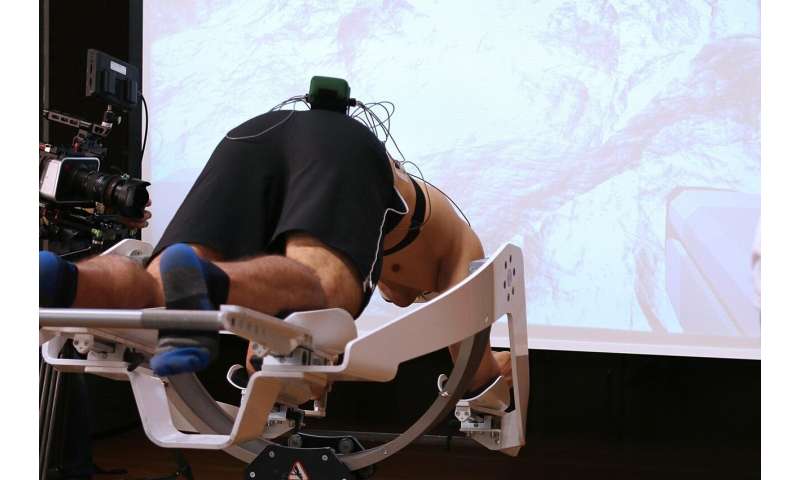
Epidemiological studies show significant correlations between periods spent sitting and the prevalence of chronic diseases. This also applies to children and adolescents. One of the major obstacles to people taking up physical exercise is a lack of motivation. The solution could be Icaros: a flight simulator with exergaming technology that promises the user an element of fun while at the same time keeping fit.
Icaros is a training device that turns the core ‘plank’ muscle exercise into a more dynamic one by making it mobile. The user lies horizontally in a prone position with forearm support on a motion platform specially equipped with movement sensors that are able to detect any changes in the user’s direction and translate them into virtual reality (VR). VR glasses and a large screen give the user a real sense of flying. According to scientist Dr. Boris Feodoroff, head of the study at the Institute of Movement Therapy and Movement-oriented Prevention and Rehabilitation, “Ideally, Icaros can be used in prevention and rehabilitation, because in both prevention and therapy it is the quality of movement which plays an essential part in effective strength training and benefits overall health.”
His team chose 33 test subjects, all male, all under 30 years of age, BMI under 25, between 170 and 190 cm tall. Each was allowed to fly twice for a period of five minutes. The aim was to find what effects VR-based training has on their cardiovascular system, and what potential it offers for effective strength endurance training. Additional attention was placed on cyber disease symptoms (motion sickness), perceived exertion, and the subjects’ entertainment factor.
The test subjects flew over virtual mountain ranges and were expected to navigate through 63 rings, which required a change in their centre of gravity. After the flights, each was given a questionnaire and asked to describe any mental, physical and emotional stress they experienced. During the simulation, heart rate, muscle activity and device movement were continuously recorded. Eight participants had to stop the experiment due to signs of nausea or discomfort, indicating motion sickness.
Source: Read Full Article